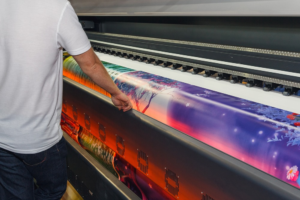The textile industry, with its intricate web of production, distribution, and retail, has long been a cornerstone of global commerce. However, like many sectors, it faces a pressing need to adapt to the demands of the digital age. Embracing technology has become imperative for textile supply chains to stay competitive, efficient, and sustainable in a rapidly evolving landscape.
Keeping this backdrop in mind, let’s explore how the textile supply chain is leveraging technology to become more future-ready.
Automation and Robotics
Automation has revolutionized various stages of textile production, from spinning and weaving to cutting and sewing. Robotics are increasingly being employed to streamline repetitive tasks, enhance precision, and improve overall productivity. Automated systems can significantly reduce lead times, minimize errors, and optimize resource utilization, making the supply chain more agile and responsive to market demands.
Internet of things and Smart manufacturing
IoT devices embedded in textile machinery and equipment enable real-time monitoring and data collection throughout the production process. This data can be analyzed to identify inefficiencies, predict maintenance needs, and optimize production schedules. Smart manufacturing technologies facilitate better decision-making, improved quality control, and enhanced traceability, fostering transparency and accountability across the supply chain.
Digital Twin Technology
Digital twins, virtual replicas of physical assets and processes, are gaining traction in the textile industry. By creating a digital twin of the supply chain, stakeholders can simulate scenarios, conduct predictive analysis, and optimize operations without disrupting the actual production process. Digital twins enable proactive problem-solving, scenario planning, and continuous improvement, leading to greater efficiency and resilience.
Blockchain for Transparency and Traceability
Blockchain technology offers a decentralized and immutable ledger for recording transactions and tracking products across the supply chain. In the textile industry, blockchain can enhance transparency and traceability by providing a secure record of every stage, from raw material sourcing to the final product. This transparency instills consumer trust, supports sustainability initiatives, and facilitates compliance with regulatory standards.
Artificial Intelligence (AI) and Predictive Analytics
AI-powered algorithms analyze vast amounts of data to uncover patterns, trends, and insights that drive informed decision-making in the textile supply chain. Predictive analytics anticipate demand fluctuations, optimize inventory levels, and mitigate supply chain risks. AI algorithms can also enhance personalization in product design and marketing, catering to evolving consumer preferences and enhancing brand loyalty.
Sustainable Innovations
Technology is driving sustainable innovations in the textile industry, addressing environmental concerns and consumer demand for ethically sourced and eco-friendly products. From waterless dyeing techniques to recycled materials and biodegradable fibers, innovative solutions are reshaping traditional production methods. Advanced analytics and machine learning algorithms help identify opportunities for waste reduction, energy efficiency, and carbon footprint optimization, supporting a more sustainable supply chain.
The textile supply chain is undergoing a digital transformation, harnessing the power of technology to become more agile, efficient, and sustainable. Automation, IoT, digital twins, blockchain, AI, and sustainable innovations are revolutionizing traditional processes and driving industry-wide innovation. Embracing these technological advancements is essential for textile businesses to stay competitive and future-ready in an increasingly digitalized world. As the industry continues to evolve, collaboration, innovation, and adaptability will be key to unlocking new opportunities and addressing emerging challenges in the textile supply chain.


